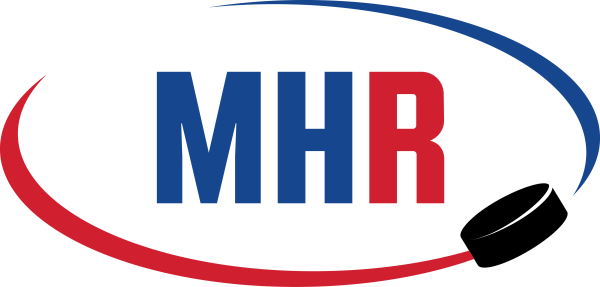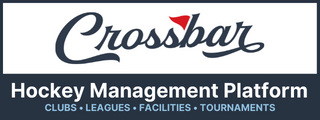
Will the Chaos & Uncertainty Surrounding Junior Hockey Affect the NAHL on Draft Day & Beyond?
By Scott Lowe – MYHockeyRankings.com
Because of its lack of age restrictions, the North American Hockey League has earned a reputation as one of the continent’s "older" junior leagues. So, when a league known for providing more opportunities for 20-year-old players who are aging out than most of the other top junior circuits holds a draft only for 16-year-old players, it raises more than a few eyebrows.
The NAHL held its inaugural Futures Draft Tuesday, with each of its 35 teams drafting two players born in 2009. Those selected immediately became affiliated players for the teams that chose them, meaning they are allowed to participate in up to 10 NAHL games in 2025-26 without being added to the team’s protected list.
It's possible that the creation of the Futures Draft was in response to the chaos and uncertainty surrounding the future direction of North American junior hockey. Junior hockey has reached a crossroads, and no one is sure exactly what the future holds for the top leagues.
Last fall, the National Collegiate Athletic Association ruled that players competing in the Canadian Hockey League for teams in the Ontario Hockey League (OHL), Western Hockey League (WHL) and Quebec Maritimes Junior Hockey League (QMJHL) would be eligible to compete at the NCAA Division I level for the first time beginning with the 2025-26 academic year.
Since that ruling, NCAA Division I commitments by CHL players have come pouring in, with more than 150 committed as of June 9, according to SportsNet. It appears likely that the number might approach 200 by the time United States colleges open their doors in September.
A year ago, the NAHL had a record 400 players committed to play NCAA hockey on its rosters, with nearly ¾ of those players having committed to Division I programs. It remains to be seen how much the NCAA’s ruling will impact those numbers. While the league’s overall NCAA commitment numbers should at least hold steady, what percentage of its players will end up playing at the Division I level?
In theory, 150 or more players who wouldn’t have committed to play NCAA DI hockey already have made commitments. A look at the actual commit list indicates that at least 125 of those players should be enrolling this fall.
Thus, it's likely that 125 or more players will be taking Division I roster spots that normally might have gone to players from leagues such as the NAHL and the British Columbia Jr. Hockey League (BCHL). The NCAA last summer also enacted a roster limit of 26 players for Division I hockey programs beginning in 2025-26, which means that there may be between 130 and 200 fewer available rosters spots at that level going forward.
Historically, the number of freshmen on DI rosters has fluctuated between about 440 and 500. If the final number of CHL players entering as freshmen tops out at 150 this year and the Tier 1 United States Hockey League sends its usual number of players to DI programs, more than 300 of those first-year slots will be gobbled up by those leagues.
The NAHL has had roughly between 250 and 300 players committed to Division I programs on its rosters in recent years. According to College Hockey, Inc., about 120 NAHL DI commits are expected to begin their college careers this fall, but College Hockey, Inc., also lists more than 800 total players who are scheduled to matriculate for the 2025-26 academic year.
It doesn’t take a math major to see that with an influx of 150 Division I players who previously would not have been eligible, shrinking rosters and more than 300 players above the normal matriculation rate estimated to enroll in 2025, at some point something has to give.
What does this mean for the NAHL, the only USA Hockey-sanctioned Tier 2 tuition-free junior league in the United States?
Well, as the league prepares for its annual Entry Draft beginning Wednesday at 2 p.m. EDT, there appear to be no concrete answers.
One thing that likely won’t suffer in the NAHL is the quality of play. For years, those familiar with the North American junior hockey landscape have pointed out that there are far more Division I-capable hockey players than there are Division I roster spots.
This makes sense given that there are only 64 NCAA DI programs, while in the United States there are 15 teams in the Tier 1 United States Hockey League (plus USA Hockey’s NTDP team) and 35 teams in the NAHL. In Canada, the CHL has 54 teams, the Canadian Junior Hockey League (CJHL) has more than 100 teams and the BCHL has 20 teams. That’s more than 220 teams in leagues that produce players who go on to play NCAA Division I hockey.
It's a certainty that the level of play among NCAA Division III programs, already at an all-time high, will continue to rise as a byproduct of the trickle-down effect created by the influx of CHL players and the reduced Division I rosters spots. United States collegiate club hockey will receive a similar boost.
What we don’t know is if the larger talent pool might entice some of the athletic programs in NCAA Division I power conferences to add hockey to their athletic offerings, if the trickle-down might cause more DIII institutions to see the benefits of enrolling 30 paying customers per year by adding a varsity hockey program and what direction leagues such as the NAHL and BCHL might take.
Surely the number of direct Division I commits produced by those two leagues is going to take a hit, but what will their response to that be? Will they see themselves as more of a stepping-stone league that sends younger players with DI potential on to play in the USHL or CHL before they head off to college or will there be a push to bring in more older, experienced players who may be late bloomers in need of an opportunity and exposure and who can help teams win championships and still possilby get late Division I offers?
Or maybe nothing changes, since the current approach in the NAHL seems to differ from team to team and division to division. Some divisions tend to have teams with younger rosters of players looking to advance within the junior hierarchy, while others skew toward older, bigger and more physical players.
It would make sense if clubs that play in markets where ticket revenue plays a large role in supporting their operations and organizations with owners who have deep pockets and prefer winning over development might continue to seek the more experienced players while others might take the opposite approach.
It's possible that the only major difference going forward is how many players from the BCHL and NAHL advance to play at the various levels of collegiate hockey offered throughout North America. Perhaps the implementation of the Futures Draft was a preemptive strike by the NAHL to cover itself and ensure that its teams have some talented younger players in their pipelines no matter what happens.
With draft day for the NAHL upon us, we asked a few scouts and coaches if the uncertain future might alter their strategy.
“Our draft strategy hasn’t really changed, because we were always one of the younger teams in the NAHL,” said one scout from a franchise in the Midwest Division. “However, we do expect a lot more junior-tested kids to be drafted today. I can tell you probably more NCDC and a lot of SJHL, AJHL and MJHL players will get taken.”
The NCDC is the National Collegiate Development Conference, a league that was completely tuition-free and based in the Northeast U.S. until expanding west two seasons ago and adding several pay-to-play teams this season. The Saskatchewan Junior Hockey League (SJHL), the Alberta Junior Hockey League (AJHL) and the Manitoba Junior Hockey League (MJHL) all are members of the Jr. A CJHL.
An Eastern Division head coach echoed that scout’s latter statement.
“We’ve made changes, yes, but we are looking for more higher-end and older players now,” he said.
Similar sentiments were expressed by a Central Division scout.
“Our draft board is pretty well set at this point,” he said. “Our general manager is running the draft, and he has his list. We are going with older kids who have proven they can score at the junior level.”
The NAHL Entry Draft begins at 2 p.m. EDT Wednesday and can be followed live by CLICKING HERE and on NAHLTV.com.
Players born within the years of 2005-2009 are eligible to play in the NAHL. Amateur players younger than 21 on Dec. 31, 2025, who are not listed on an NAHL team roster or are listed on an NAHL team roster but played fewer than 10 NAHL regular-season and playoff games during the 2024-25 season – and who did not accept a tender from an NAHL team prior to the 2025 NAHL Entry Draft – are eligible to be selected.
The number of players each team can draft varies on that team's current protected list minus the number 30. Each team's protected list consists of returning veteran players and signed tenders only.
To clarify, if a team has 12 retuning players and eight tenders on its protected list, it will be able to draft 10 additional players. Tenders are players who have signed tender agreements and whose NAHL rights are owned by the team with whom they’ve signed.
Once drafted, a player is property of that team in the NAHL until he is released or his rights are traded. He still may pursue opportunities in other North American junior leagues.
Drafted players usually are required to attend a main tryout camp during the summer in hopes of making the final training-camp roster, which must be reduced to 25 players by Sept. 1.

